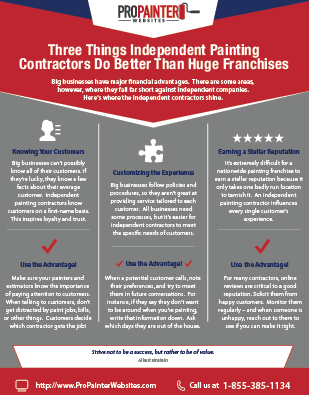Understanding Seasonal Influences On Commercial Exterior Paint: Vital Understanding For Success
Understanding Seasonal Influences On Commercial Exterior Paint: Vital Understanding For Success
Blog Article
Web Content Written By-Fox Chaney
When you're preparing a commercial external paint task, seasonal factors can make or break your outcomes. You'll wish to consider how temperature level and moisture effect paint application and drying out times. Selecting the appropriate period can ensure your paint sticks correctly and lasts longer. Yet which seasons are absolutely the very best for this kind of job? Let's discover the key elements that can affect your task's success.
The Impact of Temperature Level on Paint Application
When you're preparing an industrial exterior paint project, the temperature level can considerably impact just how well the paint adheres and dries out.
Ideally, you wish to paint when temperature levels range in between 50 ° F and 85 ° F. If it's also chilly, the paint might not treat appropriately, causing problems like peeling off or cracking.
On the other side, if it's also hot, the paint can dry out also swiftly, stopping proper adhesion and causing an irregular surface.
You should additionally think about the moment of day; morning or late afternoon offers cooler temperatures, which can be a lot more favorable.
Always check the supplier's referrals for the particular paint you're utilizing, as they typically supply guidance on the perfect temperature range for optimum results.
Moisture and Its Impact on Drying Times
Temperature level isn't the only environmental variable that influences your industrial outside painting project; moisture plays a significant function also. High moisture levels can slow down drying times drastically, impacting the overall high quality of your paint job.
When the air is saturated with moisture, the paint takes longer to cure, which can lead to problems like bad bond and a higher danger of mildew growth. If you're repainting on a particularly moist day, be prepared for extensive wait times between coats.
It's vital to monitor regional weather conditions and strategy accordingly. Ideally, aim for moisture degrees in between 40% and 70% for ideal drying out.
Maintaining https://www.thrillist.com/lifestyle/nation/what-to-do-before-you-paint-a-room-painting-tips-how-to-paint-like-a-pro in mind ensures your project stays on track and provides a lasting surface.
Best Seasons for Commercial Outside Paint Projects
What's the very best season for your industrial exterior paint projects?
Spring and very early loss are generally your best bets. During these periods, temperature levels are mild, and moisture degrees are typically lower, creating perfect conditions for paint application and drying out.
Avoid summertime's intense heat, which can create paint to completely dry too promptly, causing bad adhesion and coating. Similarly, wintertime's cool temperature levels can hinder appropriate drying out and healing, running the risk of the longevity of your paint task.
Aim for days with temperatures in between 50 ° F and 85 ° F for ideal results. Bear in mind to inspect the neighborhood weather report for rain, as damp conditions can wreck your job.
Planning around these aspects guarantees your paint project runs smoothly and lasts much longer.
Verdict
In conclusion, intending your commercial external paint tasks around seasonal considerations can make a substantial difference in the outcome. By stucco painter during the excellent temperatures and humidity degrees, you'll guarantee far better attachment and drying times. Bear in mind to watch on local weather forecasts and pick the right time of year-- springtime and early fall are your best options. Taking these actions will certainly aid you accomplish a durable and professional surface that lasts.
